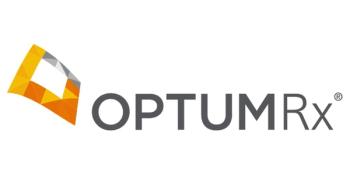
ASA ISC 2006: Neuroprotectant reduces disability after ischemic stroke
An investigational free-radical trapping agent, NXY-059, significantly reduced disability when given within 6 hours of acute ischemic stroke, said Kennedy R. Lees, MD, at the American Stroke Association's International Stroke Conference 2006 in Kissimmee, Fla.
An investigational free-radical trapping agent, NXY-059, significantly reduced disability when given within 6 hours of acute ischemic stroke, said Kennedy R. Lees, MD, at the American Stroke Association's International Stroke Conference 2006 in Kissimmee, Fla.
In the SAINT (Stroke Acute Ischemic NXY-059 Treatment) study, NXY-059 improved disability scores on the modified Rankin scale at 90 days following stroke but had no effect on National Institutes of Health Stroke Scale (NIHSS) scores. The 2 outcomes measures were co-primary end points of the study, but the overall distribution of disability scores on the modified Rankin scale was the first in the hierarchy of end points, Dr Lees, lead investigator of SAINT, said.
SAINT was a phase 3 double-blind trial of 1,722 patients with acute ischemic stroke who were randomized to either placebo or NXY-059 within 6 hours of stroke onset. NXY-059 was given as a 1-hour loading infusion followed by a maintenance infusion for 71 hours.
Compared with placebo, a further 3.7% (P=.02) of patients randomized to NXY-059 recovered the ability to walk (modified Rankin scale score ≤2), and an additional 4.4% (P=.003) assigned to NXY-059 had a complete recovery (modified Rankin scale score of 0).
There was no significant benefit of the drug on the pre-specified neurologic end point on the NIHSS.
The benefit of NXY-059 on the modified Rankin score was present irrespective of the time to treatment, stroke severity, or treatment with t-PA, said Dr Lees, professor of cerebrovascular medicine, Western Infirmary at the University of Glasgow, Scotland, UK.
When given with t-PA, NXY-059 reduced the risk of ischemic-to-hemorrhagic transformation from 27.3% to 15.4% (P<.005), and lowered the risk of symptomatic intracranial hemorrhage from 6.4% to 2.5% (P<.05).
Using a shift in Rankin scale rather than the dichotomized analysis may be a more accurate method to gauge improvement, said other presenters.
"Stroke treatments are generally not curative but improve outcomes along a broad functional continuum... when we dichotomize outcomes, we've thrown out a lot of outcomes information, which means that we often underestimate our treatment benefit and/or our treatment harm," said Jeffrey Saver, MD, medical director at the University of California, Los Angeles, Stroke Center.
Another doctor agreed with employing observance of Rankin scale score shift as a measure. "Shift analysis accords with our knowledge of stroke biologically as a disease that causes people to be functionally impaired, and treatments will improve them somewhat, and it is more often powerful and more sensitive than standard dichotomization," said Marc Fisher, MD, professor and vice chairman in the department of neurology at the University of Massachusetts in Worcester, Mass. "There was a significant effect on reducing hemorrhagic risk with concomitant t-PA use, which suggests that NXY-059 would be used routinely with t-PA, especially in patients at high risk for intracerebral hemorrhage."
Results of the SAINT study have since been published in the New England Journal of Medicine (2006;354: 588–600).
The SAINT II trial is investigating the effect of NXY-059 in a larger population of stroke patients.
Newsletter
Get the latest industry news, event updates, and more from Managed healthcare Executive.




















































